Paymo is a leading project management software that enables businesses to manage their clients, projects, invoicing, and time tracking.
By connecting Paymo to Excel using Coefficient, you can seamlessly import your project management data into a spreadsheet for in-depth analysis and reporting. This tutorial will walk you through the steps of setting up the integration and fetching your Paymo data into Excel.
Prefer to watch? Check out our video tutorial below for a step-by-step guide.
Advantages of Using Excel to Analyze Paymo Data
- Uncover Valuable Insights: By consolidating Paymo data with information from other sources in Excel, you can gain a comprehensive understanding of your projects, clients, and team performance.
- Save Time and Effort: Coefficient automates the process of importing and updating your Paymo data in Excel, eliminating manual data entry and ensuring your reports and analyses are always based on the most current information.
- Empower Your Team: Share your Paymo data with team members and collaborate on project analysis, enabling your team to identify and address issues in real time.
How to Install Coefficient in Excel
Before we get started, you’ll need to install Coefficient in Excel. Don’t worry, it’s a fast and straightforward process that you only need to do once. Follow these simple steps to get started:
Open Excel from your desktop or in Office Online.
Click ‘File’ > ‘Get Add-ins’ > ‘More Add-Ins.’
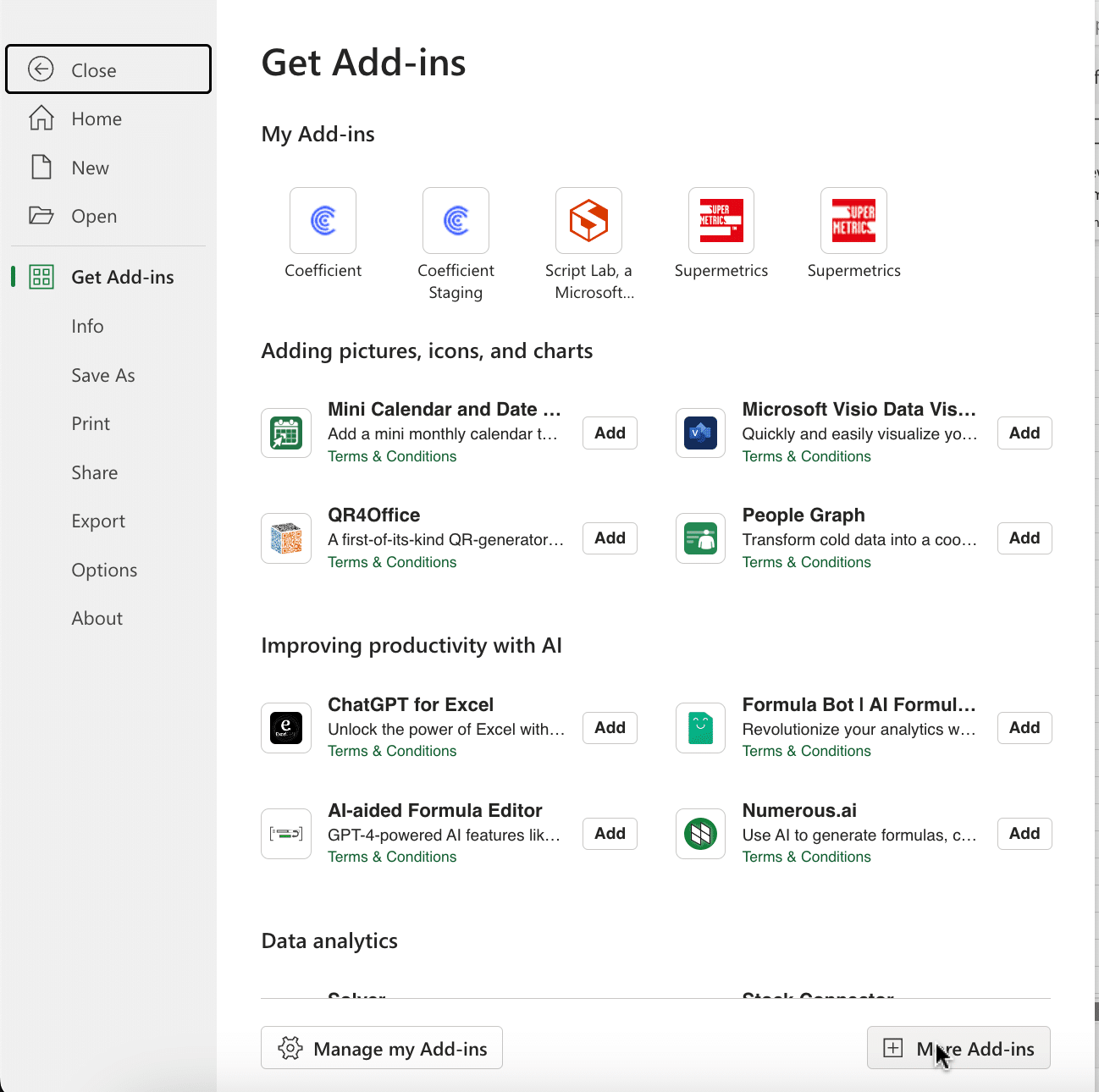
Type “Coefficient” in the search bar and click ‘Add.’
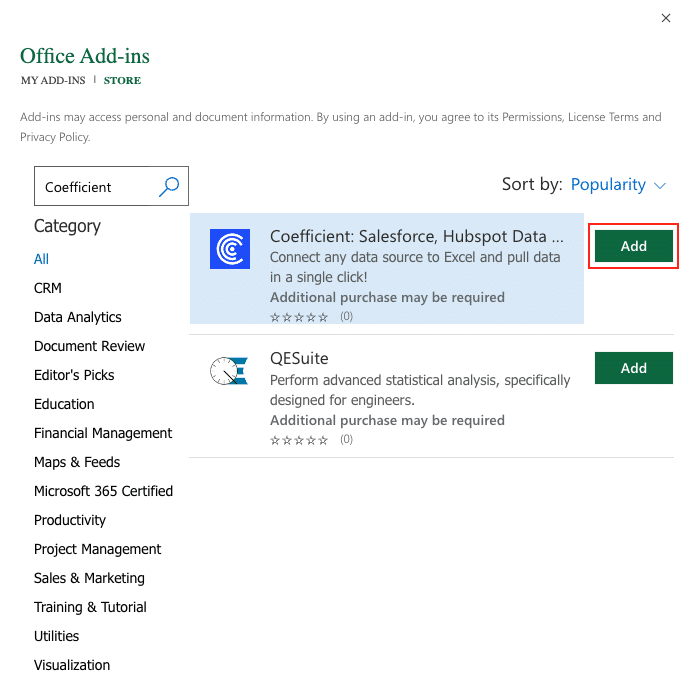
A pop-up will open up. Follow the prompts to complete the installation.
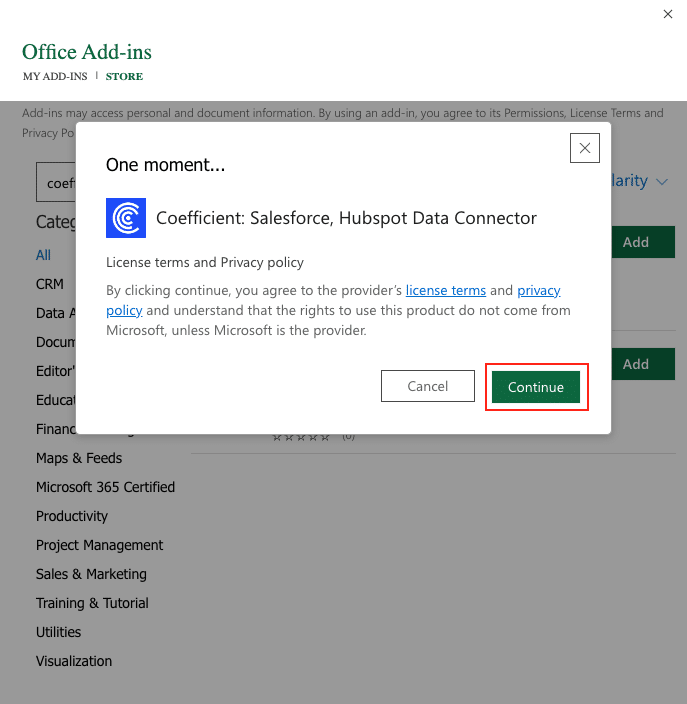
Once finished, you will see a “Coefficient” tab at the top navigation bar.
Click ‘Open Sidebar’ to launch Coefficient.
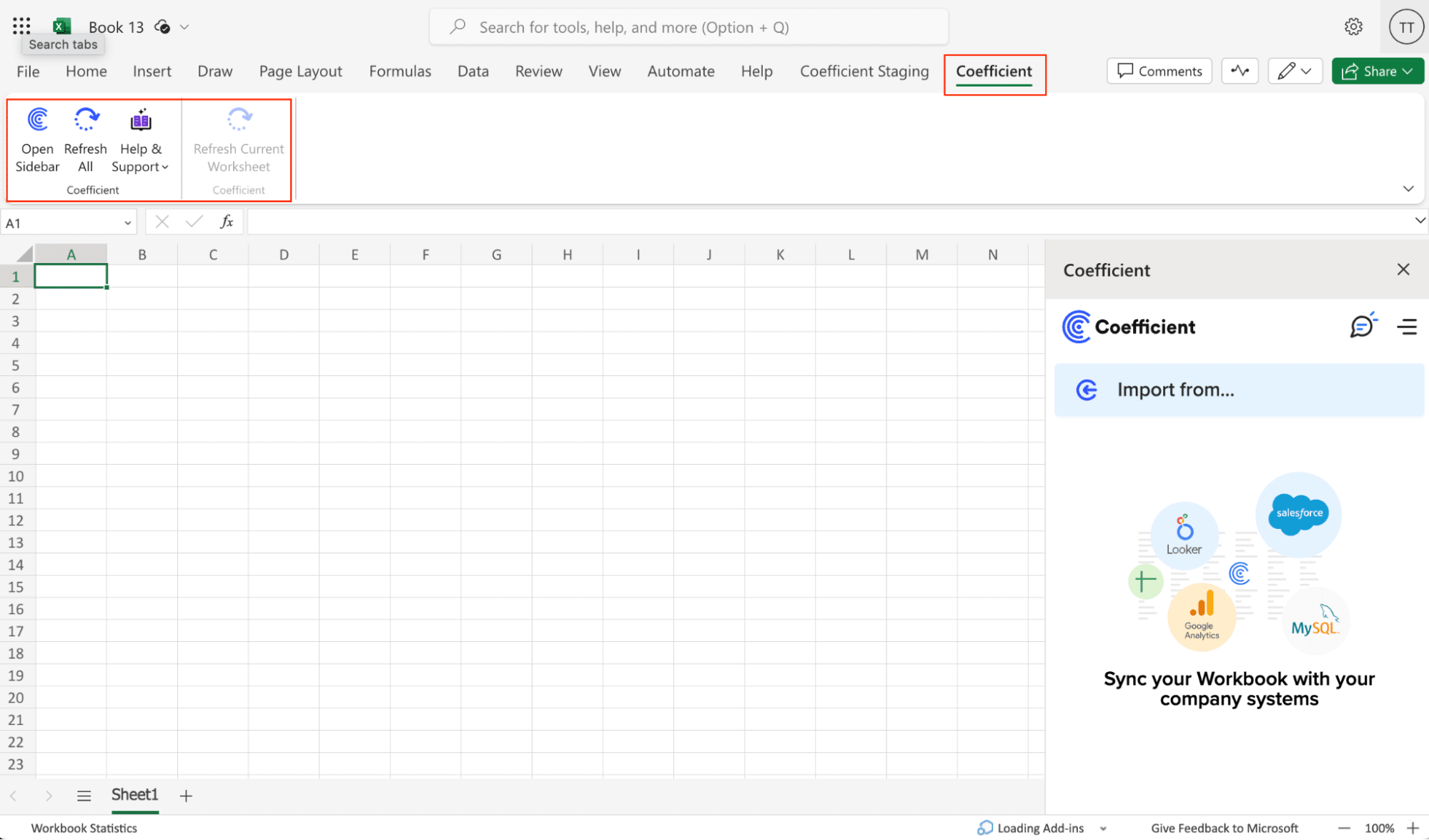
Step-by-Step Tutorial: Connecting Paymo to Excel Using Coefficient
Now that you have Coefficient installed, you can easily import your Paymo data into Excel. Let’s go through the process step by step:
Step 1: Connect Paymo to Coefficient
Click ‘Import from…’ from the Coefficient menu.
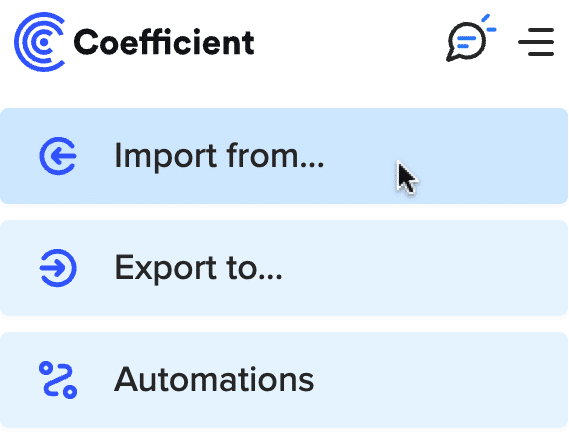
Navigate down the menu to find Paymo. Click ‘Connect.’
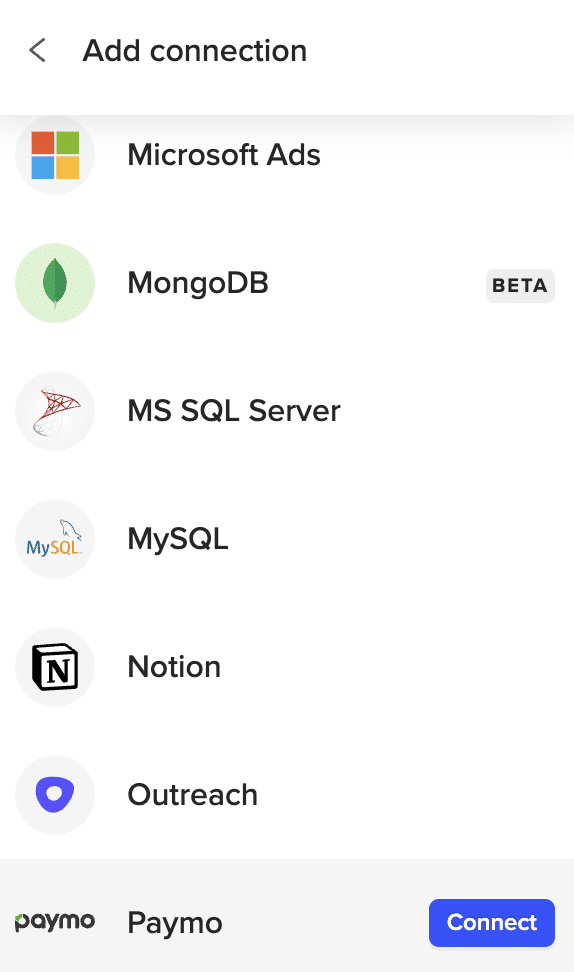
Enter your Paymo API Key and click ‘Connect.’
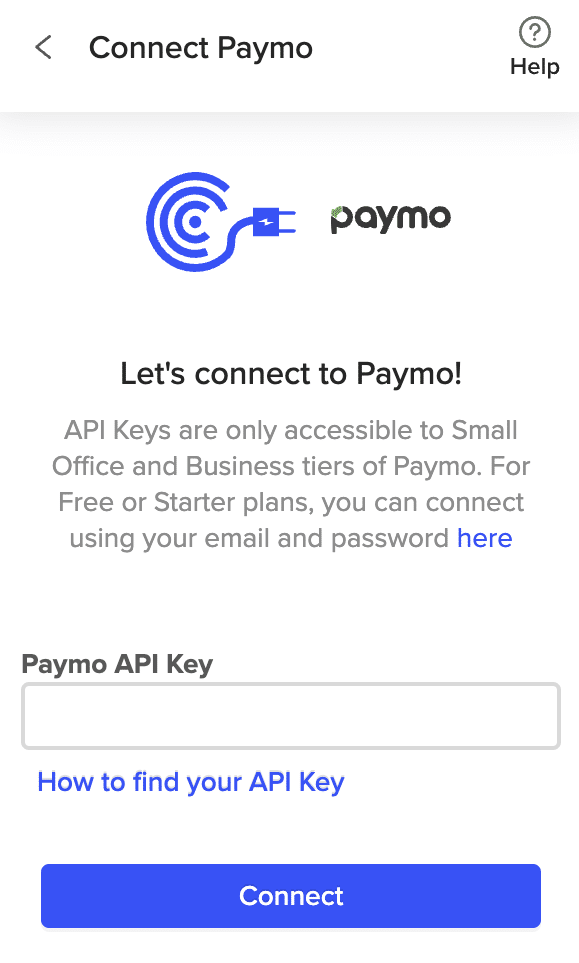
Then, enter your login information.
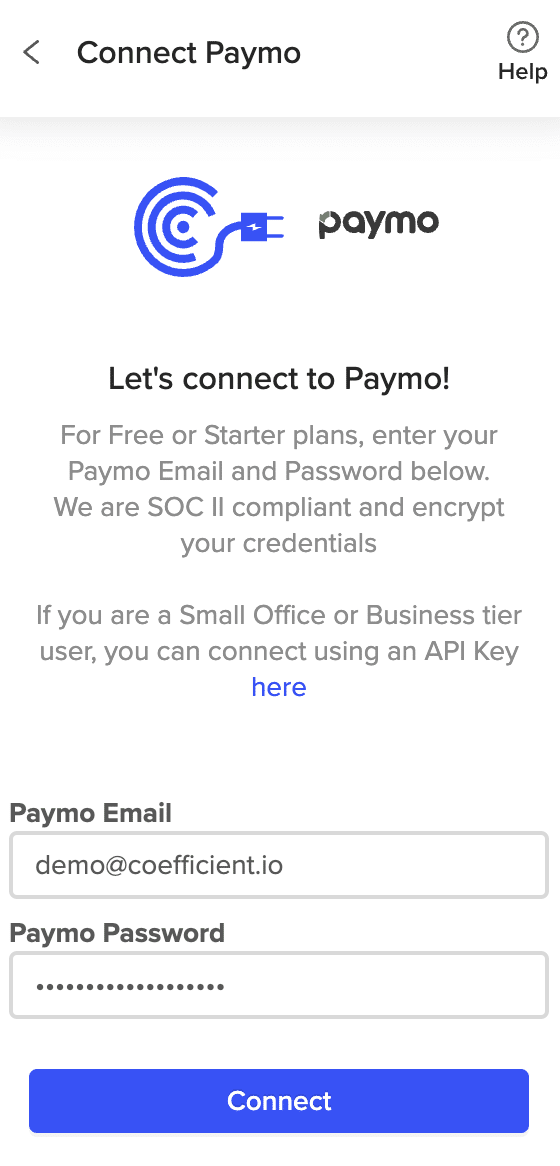
Step 2: Explore available data
Select ‘Start from Scratch’ after connecting Coefficient to Paymo.
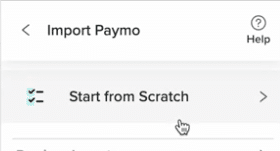
Review the list of available data sources (e.g. clients, contacts, estimates, and expenses).
Note: Paymo dooes not allow access to certain data sets for its Free Tier users. This means Coefficient can’t pull some types of data, like expenses, for example.

Step 4: Import task data into Excel
Select the ‘Get Tasks’ to fetch task data from Paymo.
Review the data preview and adjust the import settings.
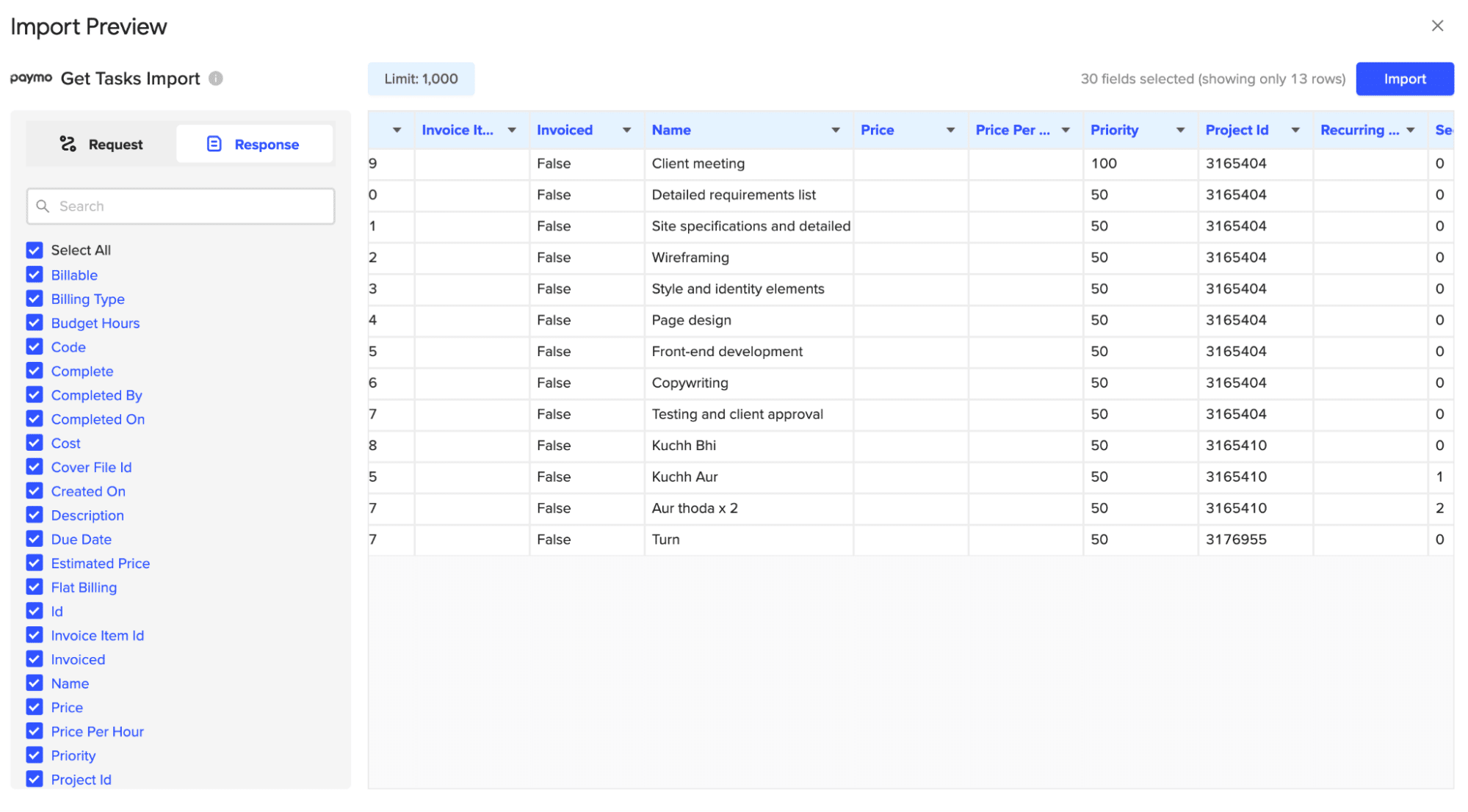
Click ‘Import’ when you’re finished customizing your dataset. Coefficient will automatically push your data to your spreadsheet!

Tips and Tricks: Analyzing Paymo Data to Google Sheets
- Create Interactive Dashboards: Use Excel’s built-in charts and formatting options to build interactive dashboards or use one of Coefficient’s pre-built templates for common reporting needs.
- Automate Data Updates: Set up automatic data refreshes in Coefficient to keep your Paymo data in Excel always up-to-date, ensuring that your analyses and reports are based on the most current information.
- Set Up Alert Notifications: Configure Coefficient to send alert notifications to Slack or email when specific conditions are met. This will help you stay on top of critical issues without constantly monitoring your sheets.
Connect Paymo to Excel in Seconds with Coefficient
Connecting Paymo to Excel using Coefficient simplifies the process of importing and analyzing your project management data.
By following this tutorial, you can easily fetch your Paymo data into an Excel spreadsheet and leverage the powerful analysis tools available in Excel to uncover valuable insights into your projects, clients, and team performance.
Get started with Coefficient for free today to try it for yourself!